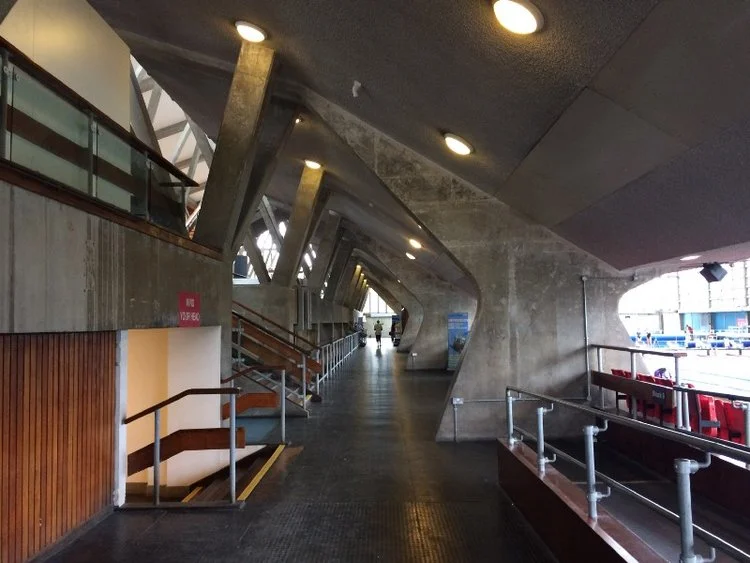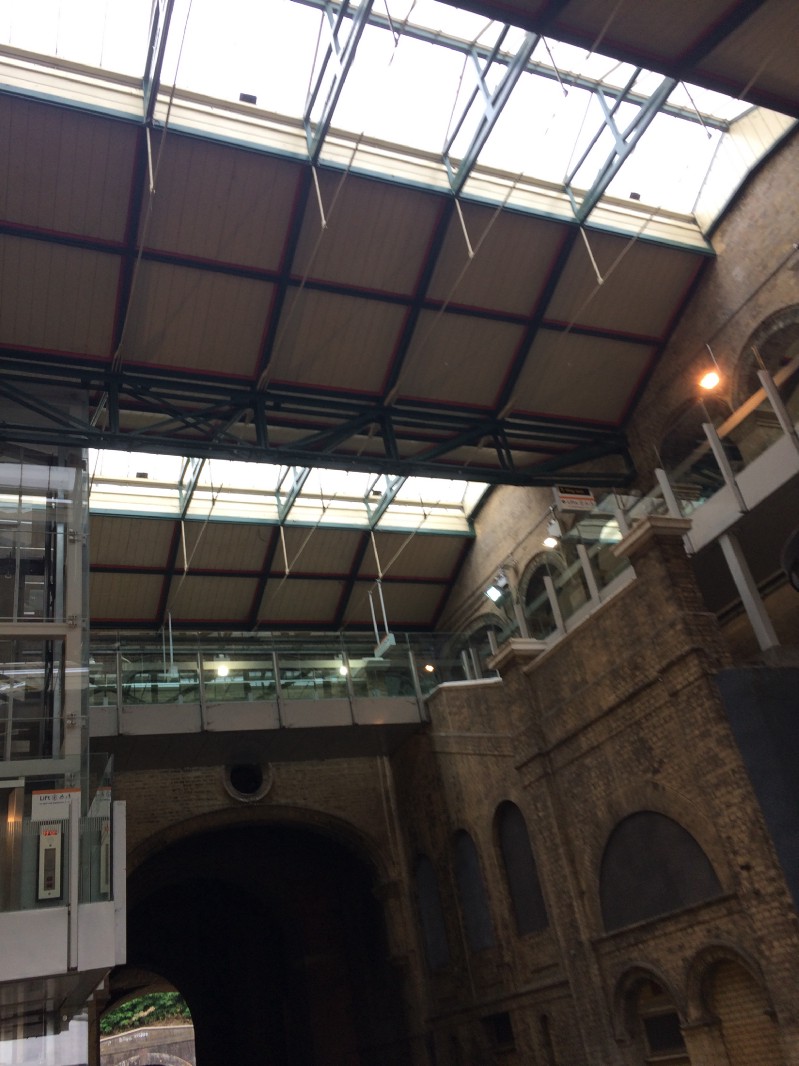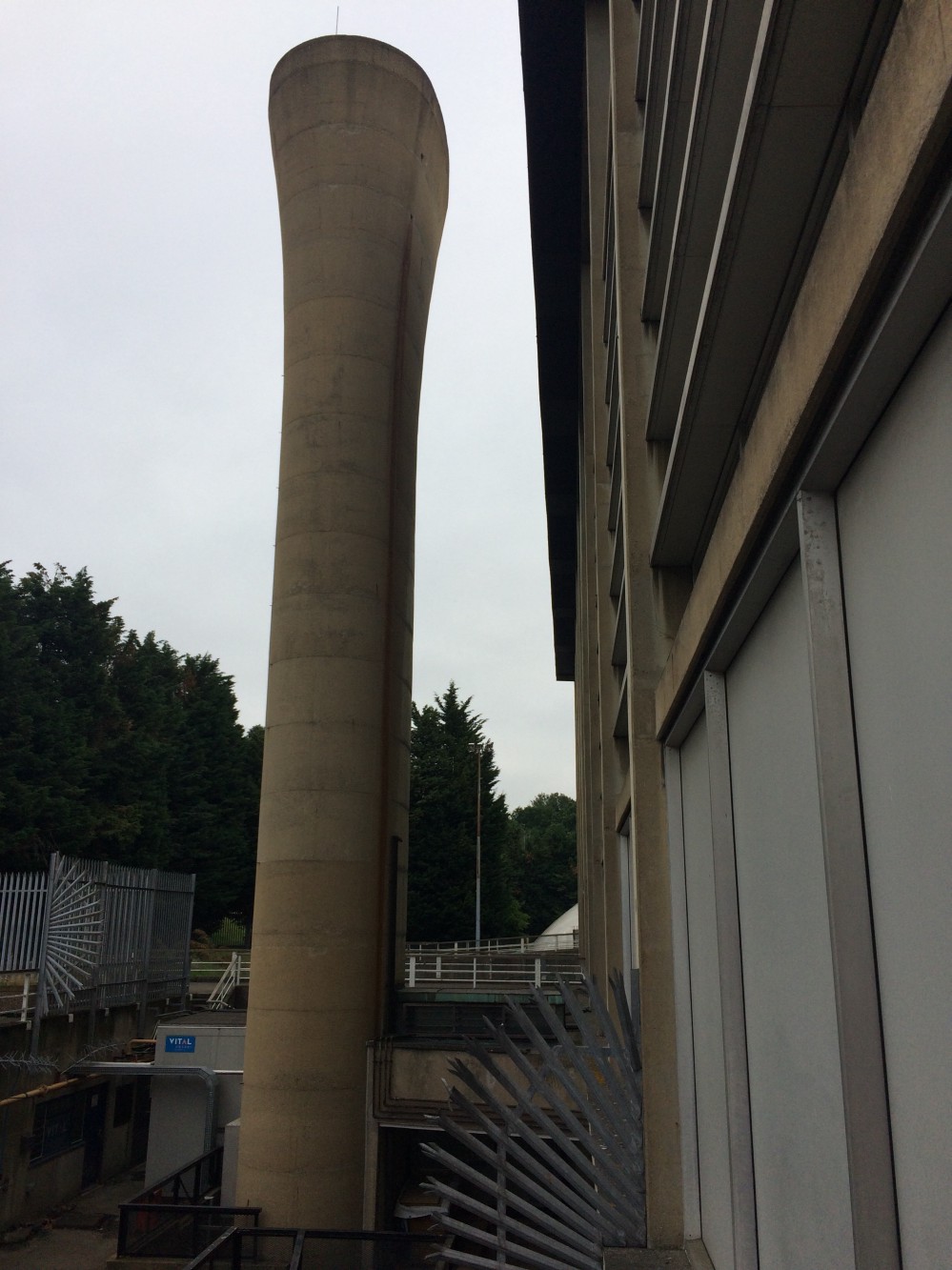Walking round London pt19: Crystal Palace Park (again) to Beulah Hill
A midcentury modern marvel starts the third quarter of the epic trek round the capital
(ICYMI: The writer is executing a 120km circumnavigation of the capital for charity. These blogs are to publicise the fundraising and consider the vernacular. There’s a full list of chapter/sections at the end of each blog.)
Told you I’d be back. Back in the boots after a mere fortnight’s absence, and back to the National Sports Centre at Crystal Palace. The very day that I wrote on these virtual pages of how sad I was not to get to the NSC, the news came through that unusually the next quarter of the Mencap Capital Challenge wouldn’t start where the last one ended, and that we’d return not just to Crystal Palace Park, but to the very sports centre that I’d so regretted being too tired to divert towards. Funny how things go.
Crystal Palace train station.
On the way there from the train station — another pleasure to behold — I seize a chance to take a better photo of the athletics stadium’s West Stand, whose spidery supports I’d spied from afar in that previous blog. For a clearer view, I walk through the open gate into what apparently doubles as a motorcycle training centre (presumably training those who sit on them rather than the machines themselves). A beleathered bloke wonders aloud what I’m up to with the standard passive-aggressive “Can I help you, mate?” Cordial enough, he lets me take a picture, but shuts the gate behind me.
Sixties living in Crystal Palace Park.
Having bonged on about it, I’m aware there’s a chance I’ll have overhyped the National Sports Centre and it’ll be a disappointment. It isn’t, and it’s busy, packed with young Saturday-morning swimmers and divers and their parents.
Were I to be in the pool, I’d mainly be doing the backstroke, the better to appreciate the architecture. Entering via a raised walkway at first-storey level, you get a feeling of scale and anticipation not unlike boarding a great ship, and the excitement continues within the building.
It’s concrete and wood and epic, but on a human scale; the connecting walkways between the building’s two lateral halves don’t feel monstrous, they feel the right size for people to walk along. They’re on the scale of the human body, before the space opens out into the sporting arenas.
From the central passageway, which reaches welcomingly inwards from the main entrance, you walk out to either side; the entrance points slightly to the west of due south, and on the morning-sun ESE flank you have the pools, while on the WSW side are capacious courts adaptable for all manner of racket and ball sports.
Echoing and improving the design of the earlier Palace with updated materials and architectural ability, the roof is held up by the exterior frame and the concrete supports which fan up from the middle; under these, brilliantly, are tucked several squash courts, which don’t need natural light.
Overlooking each squash court, next to one of the spinal walkways, there’s two deep steps in beautiful dark brown inlaid wood which can function as either an area to rest and chat (away from the pool spectators’ seats) or somewhere to watch the squash — you could get 30 people sat watching each match, which is probably more than most games get. It’s a clever, lovely touch.
Futuristic without being alien, it’s a wonderful building. Yes, some bits are flaking at the corners, but so am I — and the centre’s 10 years older than me, and has brought a lot more pleasure to a lot more people. Fittingly for purpose, the National Sports Centre captures something heroically confident yet tinged with proleptic irony: just as we know that not all budding sports stars will become world champions, we also know that not all modernist buildings will be so well received, so well done.
I could go on, but I must go onwards. The third quarter of the 120km Capital Challenge will take me as far round as Richmond, my end of town if not quite my neck of the woods. First, we wander through the northern end of Crystal Palace Park, untouched by our weary feet a fortnight ago. Passing between the NSC’s entrance and the athletics stadium, we get to admire the somewhat Soviet dereliction of the old scoreboard.
Turning north to go round the back of the sports centre, we can admire its inflatable dome — where I did my very first football coaching, right back at the other end of this decade. We thread between a lake and a maze, climbing a hill to find a rusty abandoned ship. Except on closer inspection, it’s not a ship, but a sculptural form. In front of it is a dilapidated wooden platform, and in front of that is a lake. It’s the lake that tips me off: this is Crystal Palace’s slice of rock history.
Here throughout the 1970s were held the Garden Parties, featuring such many and various luminaries as The Faces, Pink Floyd, Elton John, Fairport Convention and Yes — and that’s just 1971; later in the decade came The Beach Boys, Joe Cocker, Roxy Music, Lou Reed, Eric Clapton, Elvis Costello and Bob Marley.
All these acts played on a ‘temporary’ stage built in 1961 by the Greater London Council; something of a Hollywood Bowl homage, it eventually outlasted its creator. The lake was and is hip-deep, so on a hot day it rarely took much more than a few ciders and fruity cigarettes before a few amphibious souls would plunge through the algae, the better to get towards their heroes.
In 1997, ahead of a musical reboot for the staging of smaller-scale local festivals, the old stage was replaced by the current structure, designed by Ian Ritchie architects and the recipient of a surprising number of awards.
I’ve written before about my distaste for Corten, the ready-to-rust steel which covers a distressing number of modern buildings. Here, it’s not just the medium that I dislike but the form. I’ve played on hundreds of stages and I can’t remember any with a diagonal roof, if you can call it that: it’s more of an awkwardly-angled windbreak. I can’t imagine it’s good to stand under or to play in front of; nor can it be acoustically helpful to have metal at that angle. What it’s very good at is making A Statement, always a trap into which architects can all too happily fling themselves. The 1961 backdrop encircled the artists and pushed them forward; this one seems to seek the attention for itself.
Climbing the first of many hills, we push on upwards towards where the Palace itself stood, its outline still triumphantly marched towards by a flight of steps wide enough to take the tens of thousands of visitors the Palace expected and, initially at least, received. Then it’s back to retrace the steps of the last few kilometres we trudged on the South walk, a fortnight earlier.
By the time we start to break new ground, at the Chevening Hub, it’s just shy of 10am and the sun is shining, although there’s a welcome breeze across the Upper Norwood Recreation Ground. I’ve been somewhat dawdling, in pleasant conversation with two lovely Bulgarians. This is possibly the shortest quarter of the Capital Trail and I’m in no rush. Last time I was vaguely concerned to return home for the evening’s Champions League final, and next time I may have a rather exciting World Cup quarter-final to spur me on, but today I’ve no particular place to be or time to get there. It’s the best way to walk.
Turning on to Hermitage Road at the west end of the park, we climb to Beulah Hill, which names both the area and the road along which we walk for half a kilometre or so. That’s enough to witness a few different housing styles, which some might see as a mishmash but here works as eclecticism.
Offering dual views over the city to the north and the downs to the south, the high ridges of Beulah Hill and Church Road (mentioned briefly in the previous blog) were stalked by a Scottish stylistic maverick called Sextus Dyball. No follower of fashion, Dyball threw whatever caught his eye into his various constructions; as Jonathan Meades put it, this “local builder to whom all devotees of inspired ugliness and sinister gracelessness will be forever indebted … subscribed to an aesthetic system that, although not far from us feels chronologically, seems unfathomably distant — a vestige of an alien civilisation.” And it worked: Church Road’s Rockmount, not so much Streatham as Salem’s Lot with its demi-octagonal roofs, is a listed building (and listed at north of £3m last time it was on the market). Such things bring a certain joy to a street, to an area, to a walk, to life.
Rockmount (© Copyright Stephen Richards and licensed for reuse under this Creative Commons Licence)
Coming up next: On to Streatham
The Mencap Capital Challenge is a charity walk circling London in four quarters, each roughly 30km. You can donate or sponsor the writer at justgiving.com/garyparkinson1974. You can also join in: the West quarter (Richmond to Hendon) will take place on Sat 7 July.
NORTHERN QUARTER, SAT 5 MAY 2018
• Pt1: Wembley to East Finchley • Pt2: …to Finsbury Park
• Pt3: …to Clissold Park • Pt4: …to Springfield Park
• Pt5: …to Hackney Wick • Pt6: …to Bow Back River
• Pt7: …to Channelsea River • Pt8: …to Royal Victoria Dock
EASTERN QUARTER, SAT 26 MAY 2018
• Pt9: Victoria Dock to North Woolwich Pier • Pt10: …to Maryon Park
• Pt11: …to Hornfair Park • Pt12: …to Oxleas Wood
• Pt13: …to Eltham Palace • Pt14: …to Grove Park
• Pt15: …to Beckenham Place Park • Pt16: …to Penge
• Pt17: …to Crystal Palace Park • Pt18: …to Upper Norwood
SOUTHERN QUARTER, SAT 9 JUN 2018
• Pt19: Crystal Palace to Beulah Hill • Pt20: …to Streatham Common
• Pt21: …to Tooting Bec • Pt22: …to Wandsworth Common
• Pt23: …to Wimbledon Park • Pt24: …to Richmond Bridge
WESTERN QUARTER, SAT 7 JUL 2018
• Pt25: Richmond Bridge to Isleworth • Pt26: …to Hanwell Locks
• Pt27: …to Horsenden Hill • Pt28: …to Sudbury Hill
• Pt29: …to Wembley, and that's that
More pics of the National Sports Centre:











































